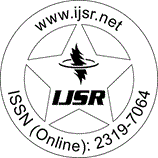Downloads: 111
Turkiye | Mechanical Engineering | Volume 8 Issue 12, December 2019 | Pages: 635 - 640
The Control of Seat Suspension System Using Fuzzy Controller on Vehicle Model
Abstract: Matlab and Simulink are used as tools for developing the simulation model of the driver seat. The mathematical model was created according to the physical setup of the vehicle seat at the testing laboratory. Description of the seat, including its mechanical characteristics and mathematical model, is given in the paper. The seat value is used for the validation of control quality. The obtained simulations show that the developed suspension controllers provide superior passenger comfort for different types of road. To improve the ride comfort of car, this paper proposed a seat suspension with damper and designed a fuzzy controller with dynamics approximation of the damper. The performance of the feedback system with a fuzzy controller is tested in computer simulations and compared with the performance of an open loop system and the feedback system with controller. The obtained results are verified in laboratory experiments. The advantages of fuzzy control are proved in experimental investigations.
Keywords: Vibration, Suspension, Transmissibility, Frequency
How to Cite?: Bekir Cirak, "The Control of Seat Suspension System Using Fuzzy Controller on Vehicle Model", Volume 8 Issue 12, December 2019, International Journal of Science and Research (IJSR), Pages: 635-640, https://www.ijsr.net/getabstract.php?paperid=ART20203312, DOI: https://dx.doi.org/10.21275/ART20203312
